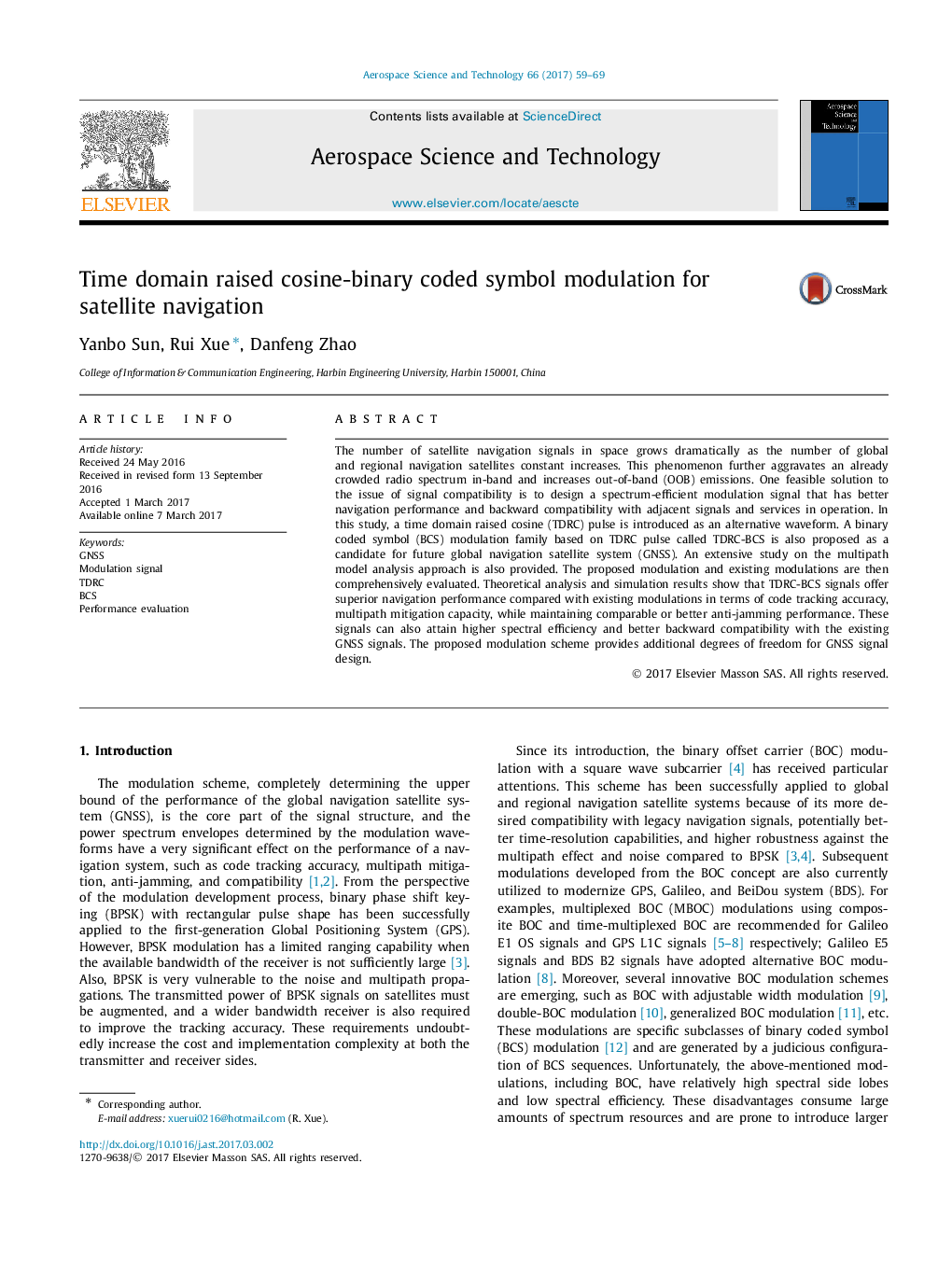| Article ID | Journal | Published Year | Pages | File Type |
|---|---|---|---|---|
| 5472855 | Aerospace Science and Technology | 2017 | 11 Pages |
Abstract
The number of satellite navigation signals in space grows dramatically as the number of global and regional navigation satellites constant increases. This phenomenon further aggravates an already crowded radio spectrum in-band and increases out-of-band (OOB) emissions. One feasible solution to the issue of signal compatibility is to design a spectrum-efficient modulation signal that has better navigation performance and backward compatibility with adjacent signals and services in operation. In this study, a time domain raised cosine (TDRC) pulse is introduced as an alternative waveform. A binary coded symbol (BCS) modulation family based on TDRC pulse called TDRC-BCS is also proposed as a candidate for future global navigation satellite system (GNSS). An extensive study on the multipath model analysis approach is also provided. The proposed modulation and existing modulations are then comprehensively evaluated. Theoretical analysis and simulation results show that TDRC-BCS signals offer superior navigation performance compared with existing modulations in terms of code tracking accuracy, multipath mitigation capacity, while maintaining comparable or better anti-jamming performance. These signals can also attain higher spectral efficiency and better backward compatibility with the existing GNSS signals. The proposed modulation scheme provides additional degrees of freedom for GNSS signal design.
Keywords
Related Topics
Physical Sciences and Engineering
Engineering
Aerospace Engineering
Authors
Yanbo Sun, Rui Xue, Danfeng Zhao,
